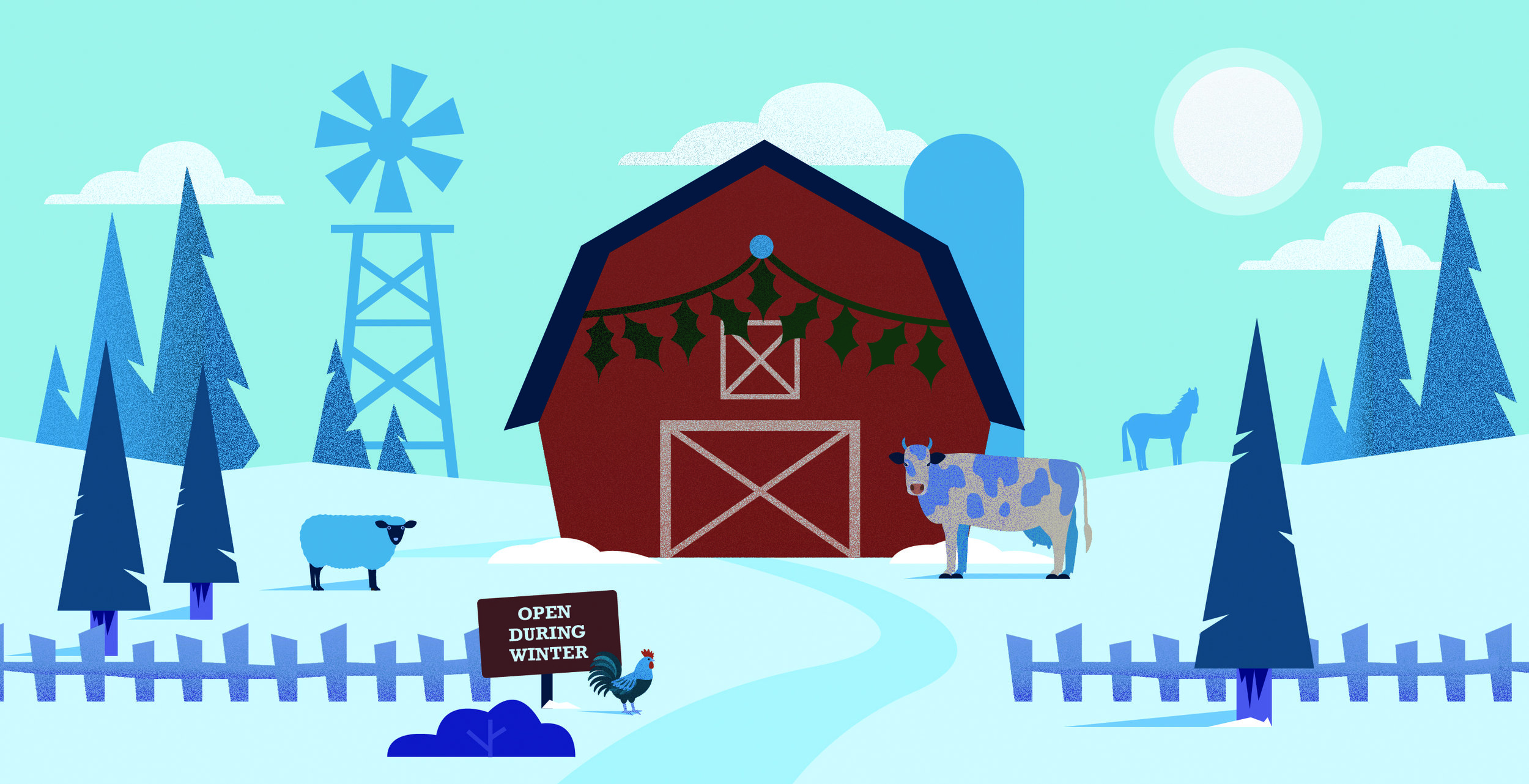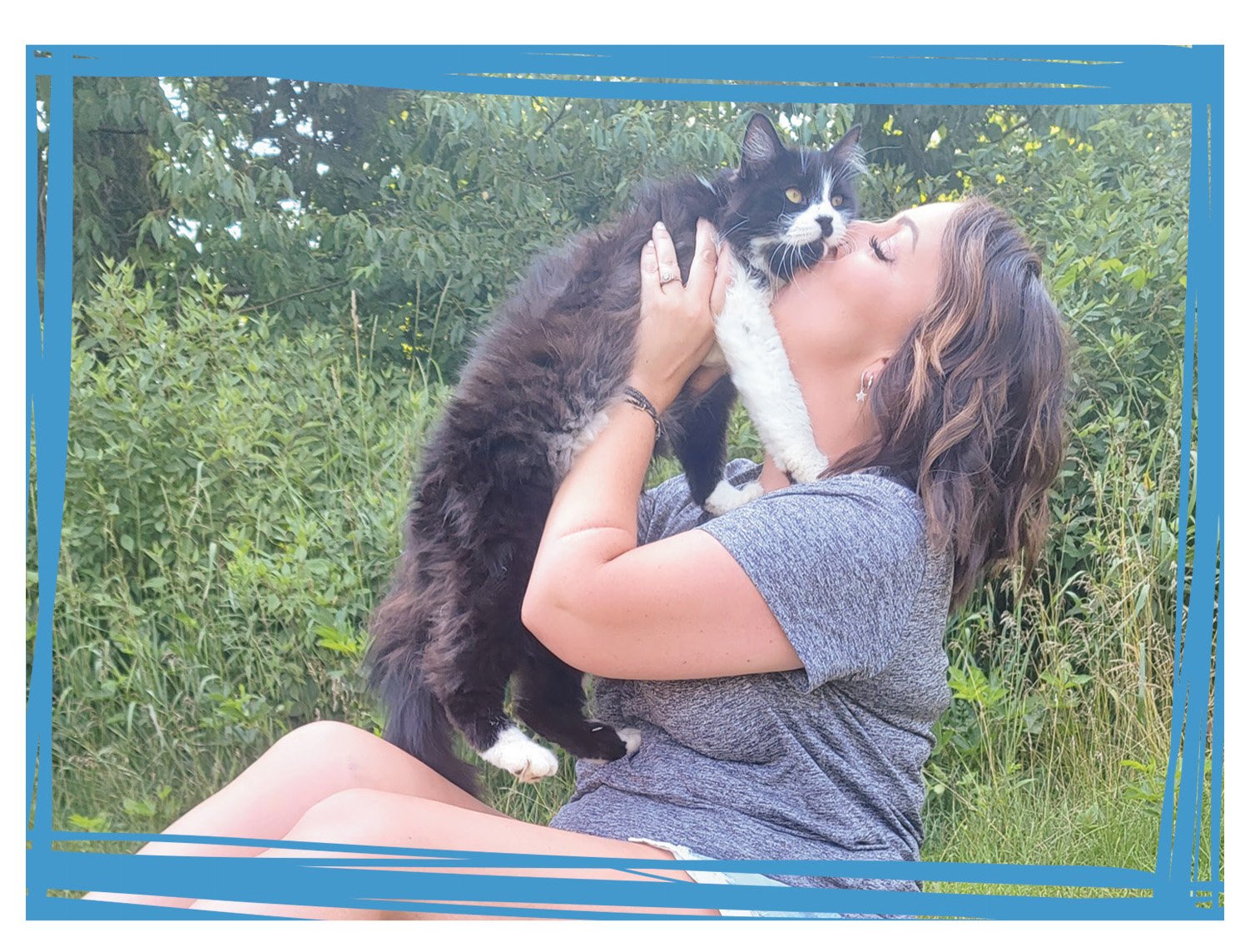Artwork by Caitlyn Muncy
By Angela Madaras
Yes! You can support our local farmers and growers even in the winter months. Most of us know that eating fresh food grown locally is better for both our bodies and our environment and like to support farmers during traditional growing and harvesting seasons. We also know that the average backyard farmer can’t grow produce in the snow. However, there are many local farmers who can grow all year long due to having hoop houses (greenhouses) that keep the air and soil warmer than what most Michiganders are experiencing in mid-January. BRRR! This technique of greenhouse growing allows the consumer to benefit from locally grown food even in the cold months.
So what kind of produce can you expect at a winter farmer’s market? Potatoes, greens, sprouts, herbs, garlic, spinach, sprouts, lettuces, carrots, as well as pork, beef, lamb, chicken, and honey to start! By shopping at a local farmer’s market you will eat seasonally fresh and ripe produce. What could be better than that? They also sell storable foods such as winter squash, dried beans, grains, and dried herbs. Think of your grandma’s root cellar. Jams, jellies, canned goods, baked goodies, cheese and dairy products, pickles, and even jerky can be preserved along with sauerkraut and kimchi. Most markets also carry art, handmade crafts, furniture, jewelry, and body care products.
What are you waiting for? Find a winter market near you!
Ann Arbor Farmers Market
315 Detroit St.
Ann Arbor, MI
Winter hours: Saturday, 8 AM - 3 PM www.a2gov.org/market
Saline Farmers Market
At the Liberty School
7265 Saline Ann Arbor Rd. (turn on Thibault Lane)
Saline, MI
Winter Hours: Saturday, 9 AM - Noon (Nov. - April)
No market Nov. 10th or Mar. 16th www.cityofsaline.org/farmersmarket
Ypsilanti Farmers Market •Downtown
16 S. Washington St.
Ypsilanti, MI
Winter Hours: Tuesday, 3 PM - 7 PM growinghope.net/farmers-markets/ypsilanti
Chelsea Farmers Market
At the Washington St. Education Center, Building 100 cafeteria
500 Washington St.
Chelsea, MI
Winter Hours: Saturday, 10 AM -2 PM (Nov.3-Dec.29) chelseafarmersmkt.org
Webster Farmers Market
At the Crossroads Community Center
5501 Webster Church Rd, Dexter, Michigan
Dexter, MI
•Winter Hours: Sunday 12 PM - 3 PM, except third Sunday www.websterfarmersmarket.org
Argus Farm Stop
Two locations!
1200 Packard Rd or
325 W Liberty St Ann Arbor, MI
Year Round, Weekdays 7 AM – 7 PM, Saturday 7 AM – 6 PM, Sunday 8 AM – 6 PM www.argusfarmstop.com




























































































































































































As a young mom and graduate student, this shopper, now in her mid-thirties, used Double Up Food Bucks during her last year in school—stretching her food dollars at the farmers markets for fresh, nutritious produce for her family. Today, she’s a social worker in the area and a Double Up volunteer who refers others with food needs to the program.